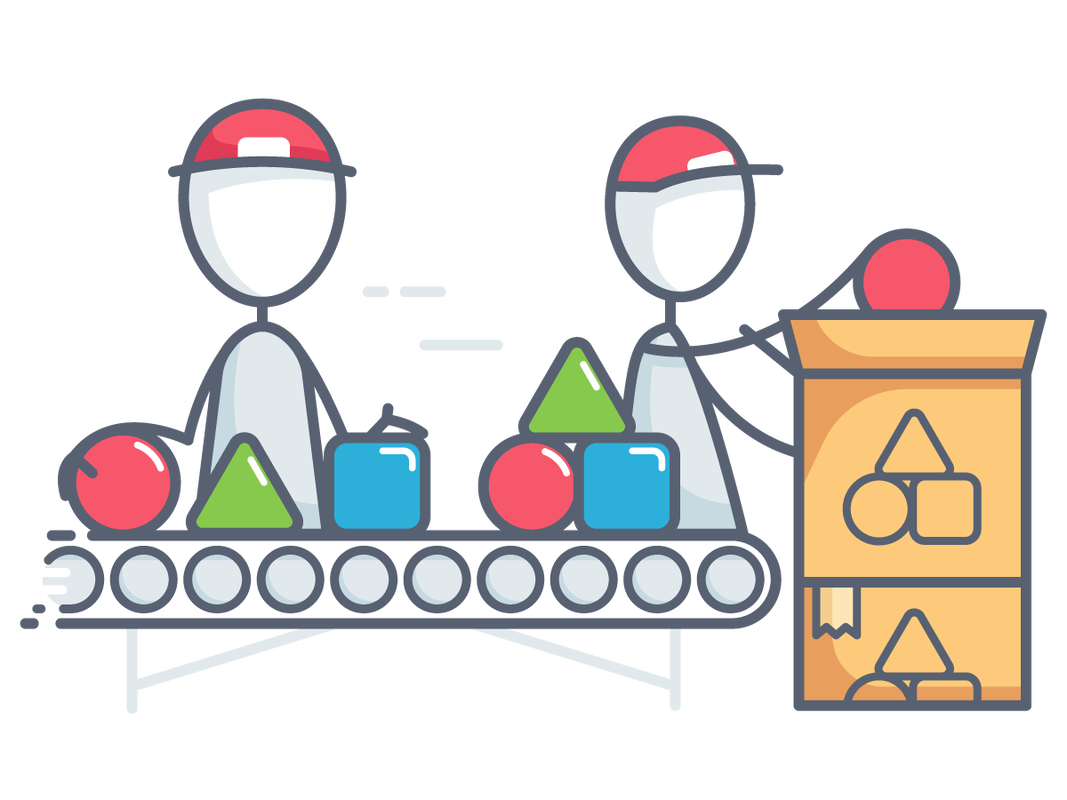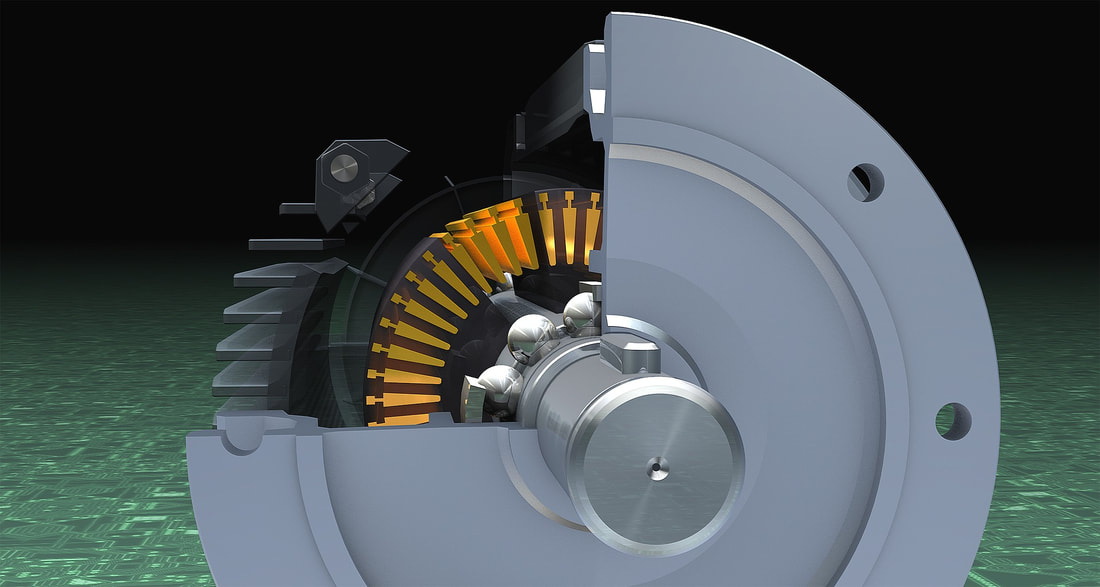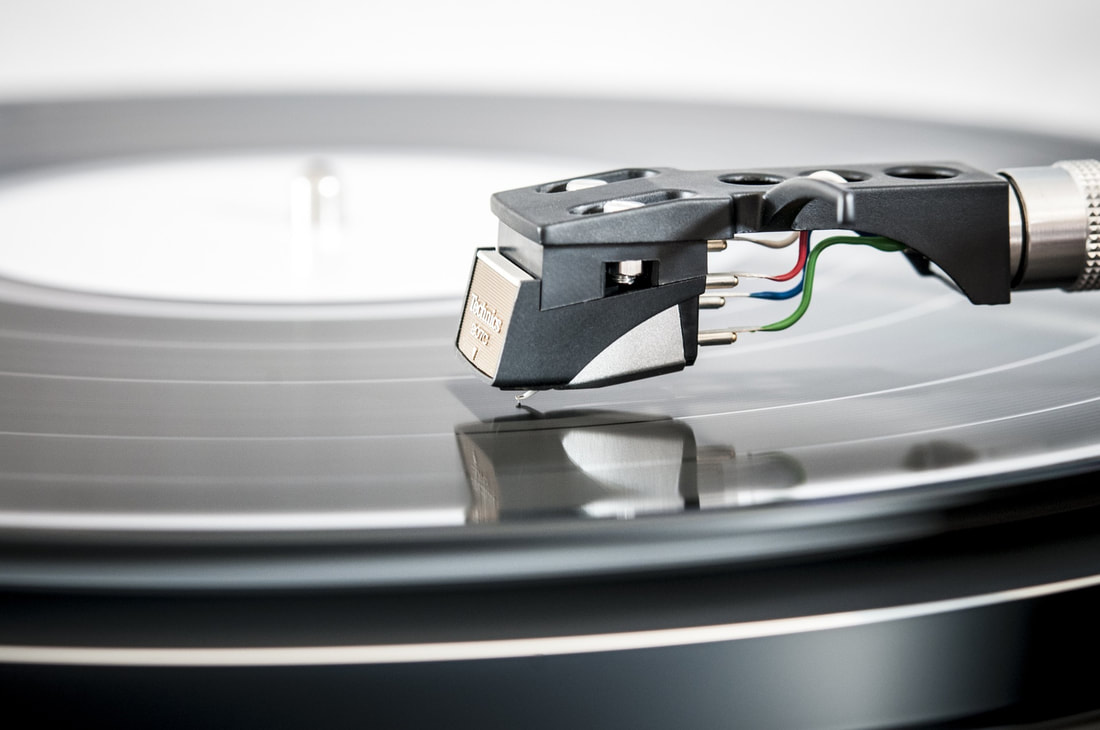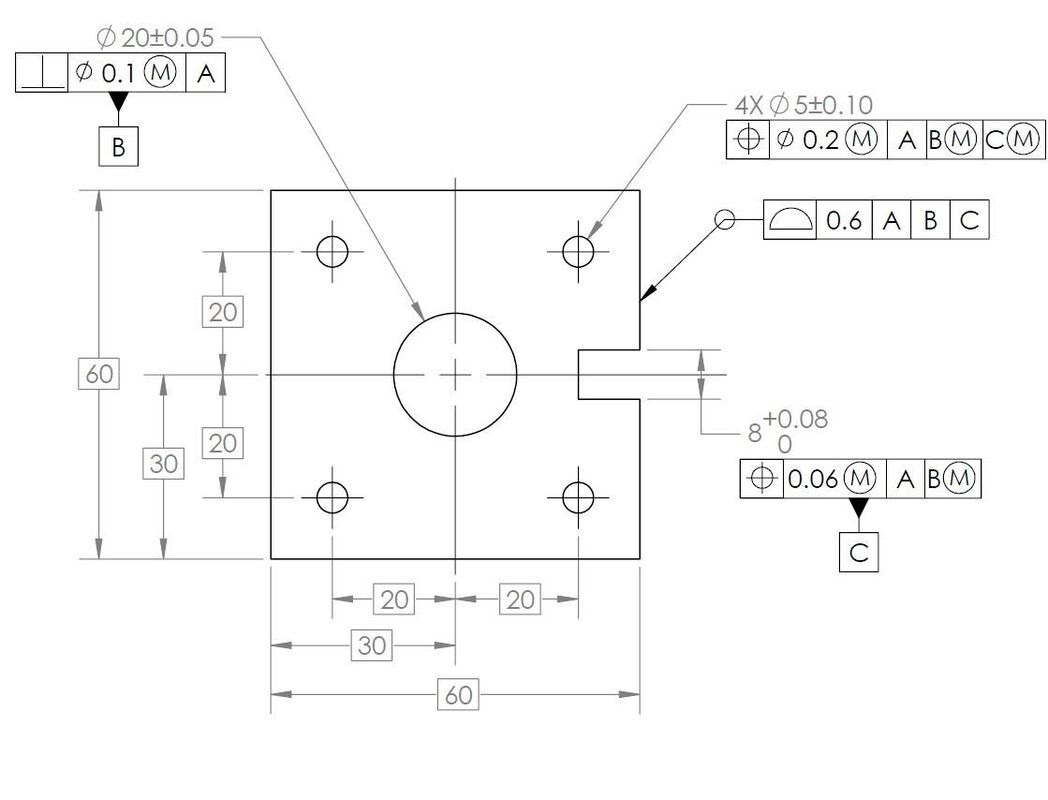|
New Product Introduction (NPI), bringing a new idea to market, is often a much more complex process than expected. In previous blogs, I’ve talked about aspects of taking a product into production like writing a business plan, design for supply chain and design for assembly. The common thread is that this is a multi-disciplinary process. There are lots of stakeholders and to have a successful product, all of the stakeholders must be considered throughout.
The ultimate stakeholder of course, is the customer. This is something that many of us will forget, it’s natural that the engineers, designers, and craftsmen who developed an idea will take pride in their work. But, if customers aren’t willing to buy your product, you don’t have a product. Taking your product into production can often be the first point where the project becomes truly multi-disciplinary. And I don’t mean different types of engineering. NPI is the first time that all the groups in a company must be involved. It’s good practice to include all the stakeholders during ideation and design, that will allow a company to develop better products quicker. But when taking an idea into production, involving everyone in the company is critical. There are a lot of different stakeholders that have a wide array of skill sets (and opinions) and they all need to effectively contribute. finance, sales and marketing, purchasing, logistics, assembly, service, QA/QC all have input to a successful product and must be part of the development process. Managing all of the stakeholders means that the one key role in the NPI process will be the project manager. They may not have that title, but someone needs to consider the entire cross-functional scope of the project while balancing budget, timeline, as well as the needs and capabilities of all of the stakeholders. This is not a skill set that everyone has and randomly assigning the role to part of the team, or worse, dividing the project management responsibilities across the team, can severely jeopardize the project. Early stage companies may not have the multi-disciplinary staff or experience required for a NPI project. Engineers will rarely be good at sourcing, there may not be a purchasing department yet, or they may not have experience with negotiating longer term volume-based supply contracts. The list goes on. NPI is one point where a company should not try to learn by trying. NPI is time sensitive and expensive. It is also not a core function, most companies don’t continually develop products, NPI will be an occasional activity and not something that requires full time staff (and the associated long term cost). Finding external support for missing experience is not a failing, but often the best way to effectively get to the company’s real goal, to get that new product into production. An external firm may be the best option for project management where experienced NPI people can provide support just for the duration of the project. Providing guidance on requirements and timing they can also assist in building internal teams and processes to support production shortening the overall development time and helping to set the company up for success. NPI is all about getting your concept to market as quickly and effectively as possible. For most companies, NPI will be a periodic necessity, and not a core function. Therefore, it is important to consider the current team and establish if there is already a team member who can take on the critical role of project manager for this new product. If not, finding budget to bring on an external firm who can manage the NPI process and allow the team to focus on what they know best – the product and its potential customer – can save money, time, and get that product into production much more efficiently. You’ve created a working design, the next step is to start production, right? The simple answer is unfortunately, no.
Building more than one of anything effectively and efficiently is completely different than building just one. That’s a sweeping statement, but there’s a lot to consider in planning your production. By assuming that you can simply duplicate your initial builds can lead to costly delays, significantly higher manufacturing costs, more frequent redesign, and often considerable post sale costs due to warranty and service issues. Building one or two units of a new product to prove out a concept is a necessary step in new product development. These first builds, or proof of concepts, help to prove that the idea is viable, can theoretically meet the business goals , and should be developed further. They allow for testing the concepts before spending any significant time and resources on engineering and manufacturing. However, those first units are typically hand crafted, often by the engineers/designers themselves, using whatever parts can be found quickly. Taking great care to make and fit parts, they test out functionality and tweak the design to work and hence, these first builds require a great deal of time and skilled labour to build and commission. Once the first builds are complete, there is a lot more work to do before the product is ready to be built in any volume. There are a host of considerations that go into a production ready design based around being able to provide a consistent, high-quality product at volume. The business plan will help identify the quantity of units that need to be produced and when. It should also outline the expected cost (profit) goals that will help determine what can and cannot be considered in production. Custom and Fabricated Parts Most products are going to be a mix of custom fabricated and purchased parts. If you don’t consider how the custom parts are made, you can design parts that are difficult, expensive, or even impossible to make. You need to select your fabricators and work with them to ensure the designs work for their equipment, tooling, and processes. You can craft a lot of things by hand that can not be made cost effectively in production. Ramping up production over time may also require a series of different designs to suit different manufacturing methods. Machining vs. injection moulding a plastic part is a prime example, you have to consider when does the extra capital cost for moulds make budgetary sense for your unique product. Additive manufacturing allows designers to get hands-on examples quickly and can be a great development tool. However, 3D printing is currently not a cost-effective process for volume parts and often produces a part that is significantly weaker with poorer surface finishes than other lower cost production options. 3D printing also allows you to create features that aren’t practical, or impossible, to make with other fabrication techniques which will lead to part redesign. Building Supply Chain Simultaneously with Product Design Supply chain frequently gets overlooked in the early development. However, sourcing the correct parts from reliable vendors that can be supplied at a reasonable price and in the quantities required throughout the lifetime of a product is critical. Not being able to secure a single chip for example, can mean a PCB can’t be assembled which can delay the entire build and a purchased part that gets discontinued can mean a lot of part redesign to accommodate an alternative. Logistics and regional requirements can greatly affect your design. If your product contains batteries for instance, there will be special considerations on how you package and ship your product. There are some jurisdictions that will require information on where all of the parts were made and assembled, and that can affect shipping and sales. It’s crucial that you develop your supply chain as part of the design process (not as a separate activity). Developing your supply chain in collaboration with your product design rather than one after the other not only improves your product design and delivery, but speeds up your time to market. This is a huge topic and we will dive into it further in a future post. Assembly Probably the highest cost of most products will be the assembly. It can also be where the most variability is added to the final product. At the end of the day, every finished product should be as close to identical to the rest as possible, consistency is paramount. Assembly must be as simple and as quick as possible to insure the lowest cost with the fewest quality issues. The first builds take a great deal of time, skilled labour can do anything with enough time and money, but that’s not the goal behind production. Production has to be the repeated building at the lowest cost to meet the sales requirements (business case). To optimize assembly, you have to look at each assembly step and ensure that it can be done as simply, safely and as quickly as possible. Parts need to align well without extra effort, tooling should be easy to use and fastening should be common throughout whenever possible. The entire process must be well documented allowing consistent training and the development of quality control standards. DFx When you have a product idea that can go to production you need to go through the entire DFx process - design for manufacturing, design for assembly, design for test, design for supply chain, design for service before it is truly ready to be made in any volume. Moving from a prototype into production is not a simple journey to navigate and it takes skill sets that are specific to new production introduction. Most companies will need some external support to do it well and efficiently and it’s well worth seeking input early in the process. Prototype seems to be one of the most misused words in manufacturing. An early working example of a concept is often referred to as a prototype; however, a prototype is actually the final design on which the manufacturing is patterned, the last design before you start to manufacture in volume. From Webster’s dictionary “a first full-scale and usually functional form of a new type or design of a construction”.
This early conceptual design is a proof of concept and is a totally necessary step to show that an idea is valid, determine if there is sales interest, and to test engineering ideas. Too often though, we see companies come up with a conceptual design, build a proof of concept and believe that the design is done and that they are ready to take the idea to production. Conceptual design is very much a creative activity and creativity cannot always be rushed. However, if the requirements of the product are well understood, knowing who the stakeholders are and what constraints must be met, conceptual design can avoid many issues. Creativity, however, does not negate good planning. Lean principles can still be used to plan and efficiently execute conceptual design. A good proof of concept needs to test if the potential product merits development. It will likely help determine how the final product will look, what features are required, and how they all fit together. It’s a learning step to help specify the product. There could many iterations, and it will focus on defining and confirming the requirements, but not on how it will be built. The final proof of concept should define the product requirements. The next step is to understand how to turn it into a product, something that can be built in volume repeatedly. Prototype design will take that conceptual design and figure out: how best to fabricate custom parts; what purchased components are suitable, available and at what cost; and how to assemble, package, ship and service the product. The necessities of cost and schedule will often dictate how much of the proof of concept design has to be modified. The final product will likely be a set of compromises from what was envisioned to what is practical. Both steps are essential. Both steps require different skill sets and input from different stakeholders. They both take time to do properly. So, it’s natural to want to skip some or all of the process, especially in a young company where budgets are tight. Every idea needs to be fully defined and vetted to ensure it meets the business needs. It’s the prototype that defines the final configuration and how that idea can be built and sold - and how profitable it will be. My Dad taught me a lot of life lessons, but two of them really stick. The first is to be honest; the second lesson is to buy the best quality products that you can afford and take care of them - they will reward you with a long life of use.
What products do you use – whether it’s a tool, an appliance, an article of clothing, a musical instrument, camping gear, or anything else - that have had a long, useful, life and are a pleasure to use? Bring to mind the older things that you consider to be vintage. Recently I listened to a podcast featuring Satish Kumar, where he says: “whatever we have should be beautiful, useful and durable at the same time.” It’s advice that he got from his grandmother. He calls it the ‘BUD’ principle of elegant simplicity. Let’s break that down a little - and as we do, I encourage you to think about how this applies in your life and experience. Later in this article, we’ll look at why forward-looking companies can benefit from adopting these principles for the products they design and manufacture. Beautiful When something is beautiful, we will want to use it for a long time. What do we mean here by beautiful? I can hear the discomfort among our engineering readers about something so subjective, so let’s qualify it:
Useful Think of the presents that you may have received in the holiday season. What will you still want in 5 years? What will wind up in donation pile, trash, recycling, or garage sale? Just so that we don’t get too puritanical here, useful items include toys, musical instruments, and so on. The question is whether this is something that you will want to pick up and use over and over. When I recently downsized from a four bedroom home to an apartment, I needed to purge about half of my possessions. What do I miss? Very little – in fact there’s a sense of freedom and lightness of only having what I need. Durable Products that last many, many years, potentially even lifetimes. Durable products are repairable with simple replacement parts and able to retain their functionality for years to come. The Business Opportunity The Turning Tide We are witnessing rapid transformation in the world. The last 40 years or so have represented a time of conspicuous consumption for many and an emphasis on low cost products that were designed and manufactured for planned obsolescence. This philosophy and behaviour has contributed to a lot of the environmental problems (landfill, pollution, climate change) that we’re just now starting to deal with. Considering that most of us are now aware of the problem, there’s an increasing desire for products that truly provide benefit (that are a joy to use and contribute to a better world), that minimize pollution and energy use throughout the lifecycle, that are usable for a long time, and that can be transformed well after they are no longer usable. Paying for the True Cost of a Product Our economic system privatizes profits and socializes costs – environmental (pollution, use of land), and societal (pressure on wages, benefits, safety, local economic collapse through plant closings, etc.). Governments, communities, and families are often the ones paying the cost of poorly made, low cost products, but this is starting to change. Just recently, the Ontario government announced that it will start charging producers for waste diversion. When the costs are borne by the producer, different product design and manufacturing decisions are made. The successful organizations of the near future will be the ones who consider these costs now and shift their design and manufacturing decisions accordingly. Our North American Opportunity How will we, in North America, be successful in designing and manufacturing products right here? I believe there’s an emerging market for high quality, well designed and made products that are affordable for most – the market segment between the low cost/marginal quality and the expensive/ultra premium end of the market. Many of the best designers and makers will want to work on these products and many consumers will turn to these products as their true value becomes appreciated. What goes around, comes around. Maybe my Dad was on to something. In this article we discuss sustainability, lay down a vision beyond sustainability, consider the role of design, and offer a few tips and questions that address the practical aspects of design for a healthier planet.
When engineers think of design and sustainability, what often comes to mind for us are straight technological fixes: energy efficiency in products and processes, reduction in toxic materials, recyclability. Although these are important, they only present a partial view of what’s necessary to solve the problems that we’ve created - to shift to a healthier physical and social environment. Questioning Sustainability Let’s first look at the concept of sustainability. What is it that we want to sustain? In the developed world, we’ve mastered taking care of our material survival needs – at least for those who can afford it. We’ve created a world where entertainment is literally at our fingertips, or at the command of our voice. We can travel at high speed and in comfort to almost anywhere. The list goes on. We’ve also created a world of (mostly exported) wars, depletion of land, species extinction, oceans choking in plastic, huge landfills, rapid climate change, social disconnection, and alarming rates of addiction, anxiety, and depression. In this context, what does sustainability mean? Do we want to keep this going for another 100 years? 500 years? We might ponder this thought: Maybe if we were to only to do half the harm, we’d be able to carry on more or less like we have been. Change our perspective. Change our world. The world and the products that we create are a reflection of what’s going on inside of us, of our society and of our corporate and work environment. As Indian teacher Sadhguru says: “How can we create a world of peace, when we have no peace in our own minds?” As designers, when we increase our own awareness, our compassion and self-compassion, our empathy for all living beings, our capacity to listen, our accountability, integrity and honesty – we begin to change our definitions of what’s important. When we combine these soft skills with our technical ability to create safe, functional, and cost-effective products, we create products that are more supportive of life and healing of the physical and social environment. This may all sound like wishful thinking, however I believe it’s the shift that’s necessary to begin turning things around. After all, isn’t doing the same thing over and over and expecting a different result the definition of insanity? Changing our approach only sounds so radical because the promotion of the current approach (faster, cheaper, more, …) is so entrenched in our systems of education, media, government, and corporate culture. When we begin seeing beyond what we’ve come to believe, the creative space opens for new possibilities. Where Do We Start? A good place to start is to consider the world that we’d love to inhabit and create, then refocus our thoughts and efforts toward that. For each of us, this will be different. And it will not take place overnight. What is your vision? For me, this world and my place in it includes:
Some Questions to Ask When Designing The Product Itself: What are we designing? How aligned is it with the vision that we hold for the world we want to live in? The Design Process: How are we designing? Is the work environment supportive or depleting? Are we rushing to get the product out to the market or taking the time required to produce something brilliant? Are we considering what our customers truly want? Production: What are the social and environmental impacts of production (from raw material extraction and processing to manufacturing processes and assembly)? Lifecycle: Is the product designed to be durable? Is it serviceable? What is the impact of the packaging? How much energy does it consume when it’s used? When its life is over, how will it be transformed (recycled, burned for fuel, re-purposed, composted, …)? Moving Forward We can design, as MIT professor Otto Scharmer writes in Theory U, what the emerging future is calling of us. Successful companies of the near future will be the ones who inspire. Who inspire the very best designers and makers to work with them? Who inspire customers who are thirsting for well designed, well made, and affordable products that truly enhance their lives? Who inspire their suppliers to co-create with them? Who are in right relationship with the planet and the beings that live on it? Let’s wake up to possibility. Realize that we’ve all had a hand creating the current reality. It’s time to create a new one. I’ve laid down a vision. I’d love to hear yours. To be successful and profitable (to meet the needs of the business) every product is a collaboration of multiple groups. As an engineer, in the past I’ve been as guilty as most at jumping into a new design assuming I understand all the requirements. After all, I’m smart, I can design it. But then later I’ve had to rework designs because I’ve missed a critical feature, misunderstood a requirement, picked a component that wasn’t supportable, etc.
I believe that one of the most important elements of a successful product is typically ignored or overlooked. Good design cannot happen if the designers don’t understand everything the product must deliver, how it must deliver it, how it affects other groups, the target cost, and timelines. But the design isn’t the only critical element in bringing a product to market. Parts must be sourced, purchased and delivered, other parts need to be fabricated, then assembled, tested, packaged, stored, delivered to the customer, and often serviced. Everyone involved, in all of those steps needs to understand what the intent is, what the limits are, and what to do if something doesn’t meet those intents. The design specification is the one document that should capture all of that information. If you Google product specification you will find lots of examples discussing a product design specification (PDS) or product requirements document (PRD) as it applies to a software product. These same documents are even more important for a multi-disciplinary product. There are more teams involved in the successful implementation; hence more need for clear and thorough sharing of all the requirements. I have always combined the PDS and PRD, but regardless if there’s one document or many, they should be referenced and organized in one place where all the required information can be clearly documented and accessed. The product spec starts with the business case. After all, we’re trying to make something someone wants to buy and we want to sell it at a profit so that the company can continue and grow. The business case should outline what functions the product must have, who it will be sold to, where it will be sold, in what volumes, and at what cost. Obviously, if one document is going to include everything required by all parties, it can’t be created and completed day one. It will continue to evolve as the details are developed. Industrial design will take marketing data and develop form and function, engineering will take the functional requirements and the industrial design and develop the detailed designs, supply chain will work with engineering to source materials and help plan production, manufacturing will take the designs and bills of material and plan assembly etc. A typical comment is that there’s not enough time to write a spec or that we already know what we want and there’s no need for a spec. At a recent manufacturing peer to peer group meeting we were discussing a design specification for a relatively simple automotive part. The spec had multiple revisions and had grown to approximately 60 pages. Someone in the group piped up and said every one of those revisions was a lesson learned. A thorough specification that is used, maintained and reviewed by all stakeholders will help plan more efficiently, avoid problems, achieve business objectives, and almost always reduce the overall time and cost of product development. In future blogs I will explore how to use the design spec to plan efficient and effective conceptual and detailed design, custom part fabrication, assembly, testing and quality control. An important hint – knowing how the spec will be used will make writing one much simpler and quicker. In this post, we’ll explore why well executed engineering drawings are still essential – in this era of 3D printing, 3D CAD, and the outsourcing of manufacturing.
As a college teacher and design advisor to start-ups, I’ve noticed that young mechanical designers have a great aptitude in 3D modeling, but often don’t direct much effort to the creation of detailed engineering drawings. I can understand the motivation for this. 3D modeling is fun – kind of like the electronic equivalent of working with modeling clay – and creating drawings just seems like a lot of tedious work. Even though the creation of a simple drawing layout from a 3D model is incredibly easy with modern design software, the harder work comes in when we apply dimensions, tolerances, and detailed notes. This is the type of notation that requires us to identify important functional relationships and limit the allowable dimensional variation that will ensure that functional requirements are met. Developing mastery in creating drawings takes time. Unfortunately, the shift in the typical environments for young designers often doesn’t support this development. When I began my career, most college and university engineering grads would begin work at medium or large size companies – where we took on junior design roles and learned how to create drawings from experienced designers who knew the products well. I call this the guild model of learning. Let’s contrast that with a common situation today - where recent grads are often the only mechanical designer in a start-up environment and are expected to create drawings for a wide variety of parts and assemblies. I can really empathize with them, as they’re in a situation where they have to either figure it out for themselves or contract out the work. So the question arises – Do we even need detailed drawings anymore? After all, they seem like a relic of when drafting boards ruled and 3D printers didn’t exist. Isn’t the 3D model good enough? Great points. To question 1: there is an alternative method called model based dimensioning (MBD), where all of the information normally contained on drawings is applied directly to the 3D model. I suspect that this will take over from drawings eventually, however it’s not yet widely used and the early implementations of it in software have been awkward to use. In this article, drawings and MBD are considered to be equivalent. To question 2: actually, we can get away with minimal or no drawings in the early proof-of-concept and subsequent industrial design phases. But once we get to the NPI phase, where we’re designing parts for testing, compliance certifications, and ultimately production, the information contained on drawings is essential for four key reasons: 1. Design – Documenting Requirements with Unambiguous Language Designers need to capture the higher level design intent for the product (e.g. ease of assembly, alignment, gap consistency, reliable sealing, etc.) and ensure that the manufactured component parts meet this intent. In order to do this, the critical characteristics and dimensional variation of these parts must be documented and clearly communicated to whomever is manufacturing and inspecting them. Engineering drawings accomplish this function, using common standards and languages developed by organizations such as ISO and ASME. In addition to clear communication, the creation of engineering drawings forces the designer to carefully consider how the component parts support the overall design intent. 2. Supply Chain – Quoting Drawings contain key information - such as tolerances, identification of critical dimensions, material specifications, finishes and coating – that do not typically exist on a 3D model. This information is critical for a supplier to quote accurately on a job. A supplier’s business success depends on meeting the specifications on the design documents at the lowest possible cost. If the specifications aren’t fully and clearly communicated, the resulting parts may not meet design intent. 3. Operations - Manufacturing and Inspection The manufacturer will select machinery, processes, tools, and fixturing to ensure that parts are produced at the lowest cost that consistently meet the dimensional tolerances and other characteristics specified on the drawing. Parts can then be inspected to unambiguous requirements on drawings, represented with standardized symbolic language, allowing for in-process control and reporting. This applies regardless of whether the parts are produced in-house, locally, or at an overseas contract manufacturer. 4. Legal – Contracts, Compliance and Protection The drawing represents what the manufacturer agrees to produce and is a contractual document, along with the purchase order and other documents. If the parts shipped don’t meet expectations, the first question should be: do they comply with the drawing specifications? In the unlikely event that the end product causes damages, and either civil or criminal charges are brought forward, the drawings will likely be used as evidence to assess whether or not proper care was taken in the design. The question then may be: do the drawings and other documentation ensure that the design complies with safety and regulatory requirements? We can see how clear and complete engineering drawings are essential for ensuring that product requirements are reflected in the design, that the manufactured parts meet those requirements, and that legal considerations are given due care. Doing the drawing work up front can save a lot of headaches down the road as well as expedite the time to market. |








 RSS Feed
RSS Feed